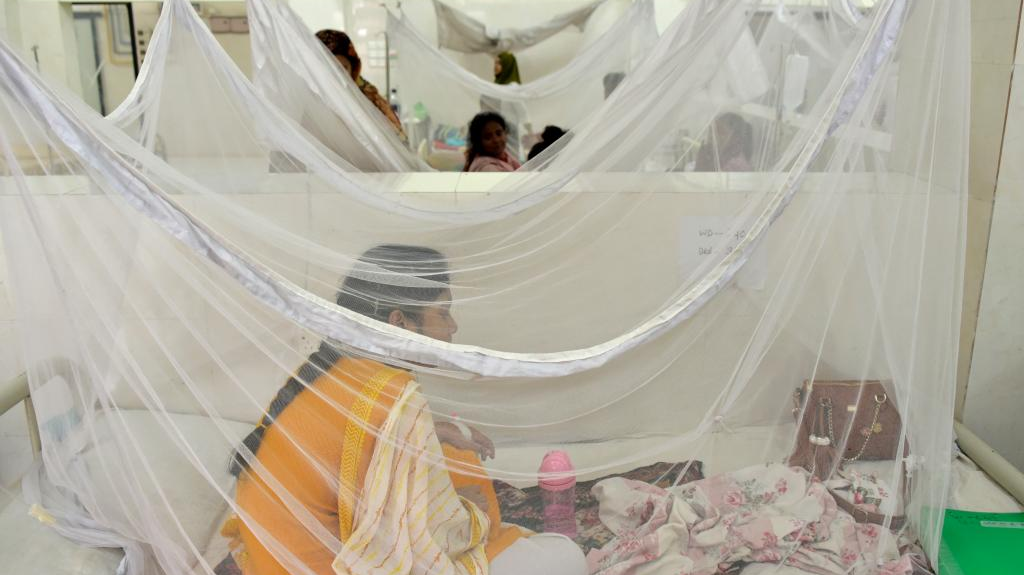This year’s dengue outbreak in Bangladesh is the most severe since the large outbreak of 2000, with over 300,000 hospitalized patients and 1,577 deaths including 156 children as of November 23. This official statistic simply represents the number of hospitalized cases; it does not represent the overall dengue situation in this country. Additionally, the official figures do not disclose the disease’s prevalence, particularly because it is unknown how many people in rural areas have either suffered from the disease or even died from it. The true number of dengue cases or fatalities is likely to be substantially higher than the number of recorded or hospitalized cases. However, scientists predict a higher number of dengue cases — tenfold the current number of patients. The health department’s records do not include the accounts of many dengue patients who choose to receive treatment at home. Even though dengue is prevalent across Bangladesh, this year’s dengue spike is different from last year’s since it started in late June and is atypical in terms of seasonality and abrupt surge.
The figure indicates that there have been more cases and fatalities than during similar periods in the previous five years. The number of dengue cases is believed to have reached its highest point, having begun to rise in May 2023 and continuing ever since. When compared to similar time frames since 2000, the reported number of dengue cases is the highest this year. The elevated dengue prevalence is appearing in the context of unusual episodic rains, coupled with high temperatures and high humidity, which has resulted in an expanded mosquito population throughout Bangladesh.
In stagnant water between June and September, the Aedes mosquito—which usually breeds in clean water and feeds during the day—finds the ideal habitat although scientists have discovered that the mosquitos now breed even in dirty sewers and in saline seawater.
The endemic dengue
Dengue fever is a viral infection transmitted mostly through the bites of infected female Aedes mosquitos. It is more common in tropical and subtropical climates around the world, mostly in metropolitan and semi-urban areas. Dengue fever has a likelihood to intensify and progress to dengue hemorrhagic fever and dengue shock syndrome. Dengue hemorrhagic fever is a more severe form in which internal bleeding occurs in the body. It is a life-threatening condition, and it may deteriorate into the dengue shock syndrome, the most critical form. There are four serotypes of the dengue virus (DENV): DENV-1, DENV-2, DENV-3, and DENV-4. A person is more likely to get severe dengue if they have consecutive infections with a different serotype. Long-term immunity to one serotype is provided, but not to the other serotypes (World Health Organization, 2023). It is observed that this year’s infections and deaths are “abnormally high” due to the overwhelming frequency of the Den-2 type strain of dengue among patients, Al Jazeera has reported.
The health authorities issued orders in August to establish dedicated dengue wards and allot special emergency funds in all government hospitals across the country in an effort to contain this outbreak. The number of dengue patients getting diagnosed and dying throughout the country has surpassed all previous record. It is noted that 229 dengue patients died in the first 23 days of November.
However, the disease’s pattern and severity have changed, becoming worse in rural places as well, despite the fact that the sickness is primarily prevalent in metropolitan and semi-urban areas. According to data, more than twice as many dengue cases are identified in rural areas than in the capital, and mortality is likewise higher in rural areas. It demonstrates that for the first time, the capital had fewer instances than the rest of the country. Health care facilities are extremely sparse in rural areas. Furthermore, most people are unaware of the severity of the sickness. If a patient does not receive care in a timely manner, it can be fatal. And this has occurred in a number of cases. Thus, the endeavor to contain the spread of dengue and declaring an epidemic or public health emergency would have made little difference. The country’s healthcare system is severely deficient, considering the size of the population and the challenge of providing care and treatment for everyone. Epidemics such as dengue exacerbate the situation from the standpoint of the general public and the public health system. Numerous healthcare facilities are handling more dengue patients than they can accommodate. For example, a hospital with 500 beds has to serve 700–800 patients even using the hospital corridors.
High treatment cost of dengue
Dengue fever’s exorbitant treatment costs have put many families in serious financial peril. According to a 2019 study, treating a dengue patient in a government hospital typically costs about Tk 11,000, whereas treating patients from outside of Dhaka costs up to Tk 20,000. Private hospitals in the class A category often cost Tk 200,000, while class B hospitals typically cost roughly Tk 41,000. In addition to the expense of treating dengue illnesses, some individuals require specialized care or have serious medical conditions like diabetes or heart problems.
Someone in shock may require plasmasol, a sterile solution, or albumin. These are also expensive, which puts further financial strain on the patients and their families. The impoverished sections of society endure the most hardship. They are forced to sell assets and take out loans from their relatives. They may even have to turn to begging if they are unable to cover the cost of treatment. Above all, this dengue outbreak serves as an appropriate reminder of the significance of pro-people public health services in improving everyone’s right to health, regardless of status, location, or identity.





